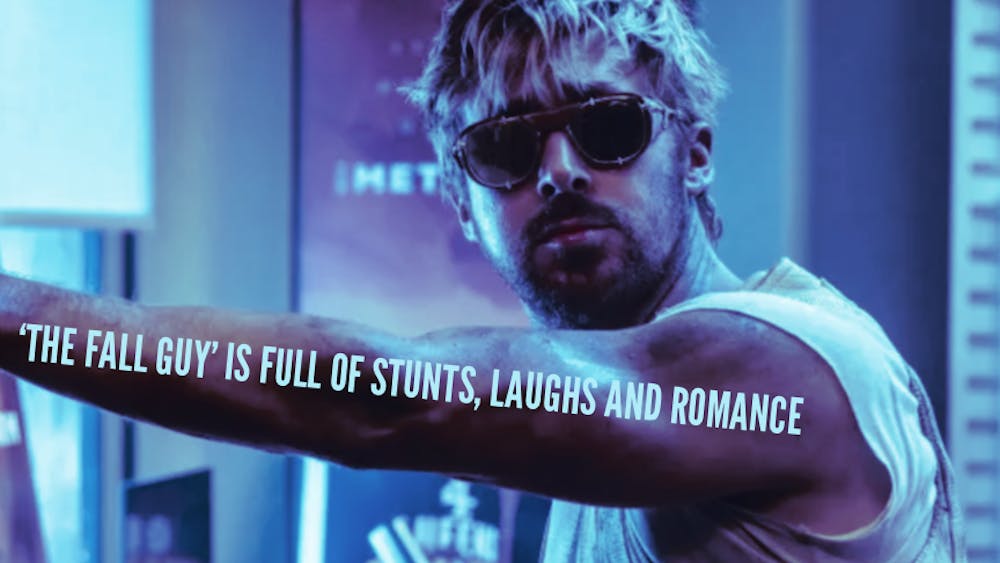
To say I wasn’t quite sure what to expect when I walked into “A Girl Walks Home Alone At Night” would be a bit of an understatement. The DeBartolo Performing Arts Center billed the movie as the first ever “Iranian Vampire Western,” and after reading about it a bit online, I was intrigued to say the least. Still, I wasn’t sure how exactly this unique movie would manifest itself.
By the end of the movie, I agreed wholeheartedly with what I originally felt was a rather confusing and cryptic description. The film was all those things — Iranian, vampire and western — and because it was those things, it was also artsy, cryptic and at times confusing.
That the film was in Arabic was hardly a challenge. In fact, being forced to read the subtitles sometimes seemed to add to the entirely mysterious air the movie had. I couldn’t know on my own what the characters said, but I wouldn’t fully understand their meaning — or most of the film's plot points — until the very end anyway. Some scenes will continue to confuse me.
The aspect of mystery that pervades the film is important. It is what keeps the audience engaged and what drives the plot, up to the film's very end (which presents puzzling mysteries of its own to consider). Like typical vampire movies, there are a series of murders, but the mystery is never a question of who is committing these acts of violence. From the beginning, we are all aware it is the unnamed “Girl” of the title.
Still, she is a puzzle. It is clear there is some method to her madness, but due to her tendency towards silence and her lack of associates, her thoughts are never clear. Even by the end of the film, the audience is left to fill in the blanks themselves.
There are two stylistic choices which make this movie both a success and a bit of a conundrum. By this I mean if the idea of an “Iranian Vampire Western” intrigues you and encourages you to see the movie, you will likely appreciate these choices. If you think that idea sounds just plain strange and would like to stay far far away from such ideas, then these choices will only further your frustration with the film.
The first is that the movie was shot in black and white. Sometimes, when not much seemed to be going on, I would attempt to imagine the film were it made in color. I failed. This is a movie that would be complicated by the inclusion of color, and the choice to shoot in black and white is essential to the film. The lack of color makes the entire movie seem as though it is shot during the night and mutes some of the action, forcing the audience to pay attention.
The second is the use of silence in the script. There were a number of scenes that included absolutely no dialogue. Some of these scenes were confusing and didn’t seem to have much of a place in the entire film. Others were important, action-filled moments that changed the entire course of the plot. In either case, the use of silence was masterfully done.
I specifically enjoyed how little the eponymous character spoke. It allowed her to continue to be mysterious, foreboding and sympathetic all at once. The audience was often forced into the position of her love interest. To create her character, one had to read between the lines and decide for oneself what her actions and intentions were.
This ambiguity in characterization opens the door for many reactions to the movie. In what was perhaps a mistake, I brought both my father and grandfather to “A Girl Walks Home Alone At Night.” Both of them hated the film. For the rest of the weekend, they teased me about how they were now frightened of any girl with a long black coat. When my grandfather and I discussed the ending, it became clear how starkly different our interpretations were.
I thought that its ending was left deliberately open, with a distinct possibility for tragedy but also for resolution. The movie closes with its two main characters "making up," but the issues between them are never fully resolved. To me, it was a story with an unresolved ending but also a story without an inevitable conclusion.
In contrast, my grandfather was sure that the ending implies inevitable tragedy: there is no way around the violence the pair’s affair will bring.
These two interpretations of the film's conclusion are likely emblematic of our views of the movie as a whole. I liked it because I felt its various ambiguities left open several worlds and implications; he hated the film because he believed all of its loose ends had inevitable conclusions. I’m not sure which interpretation is correct.
I think, though, one’s enjoyment of "A Girl Walks Home Alone at Night" can be determined by one’s reaction to the words “Iranian Vampire Western.” If you’re intrigued, then you'll probably find the movie fun. If you just think it sounds just too weird, you may be better off staying away.













